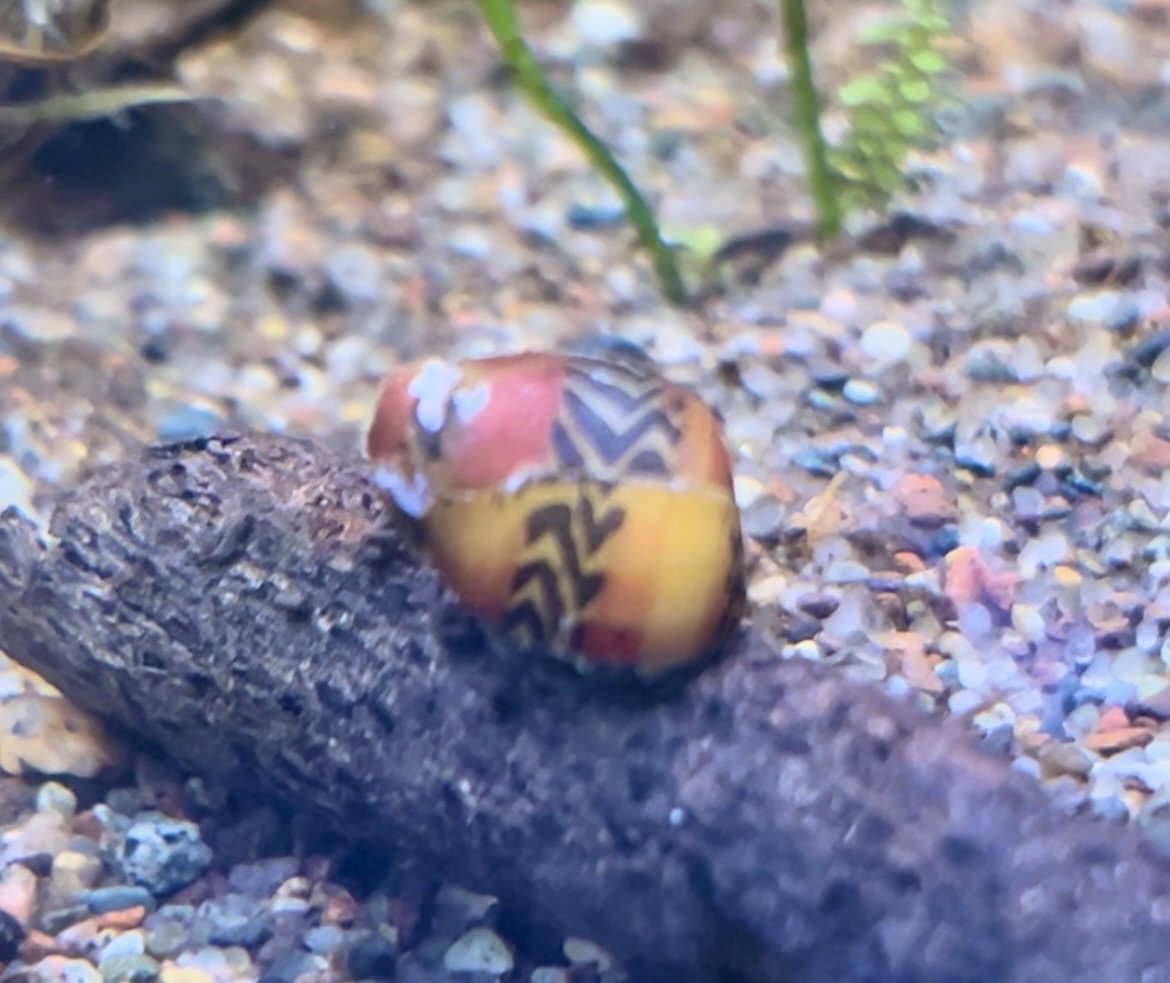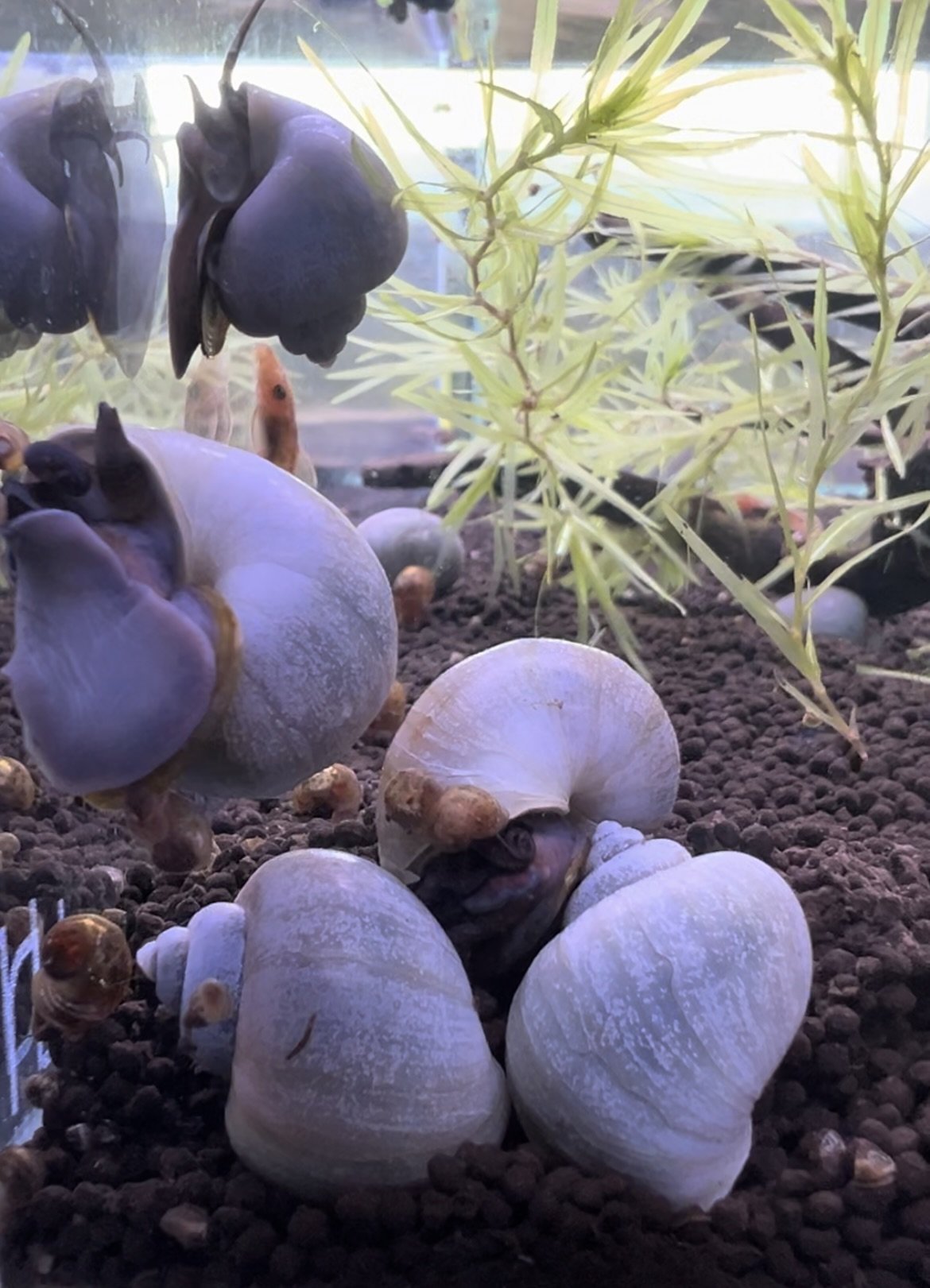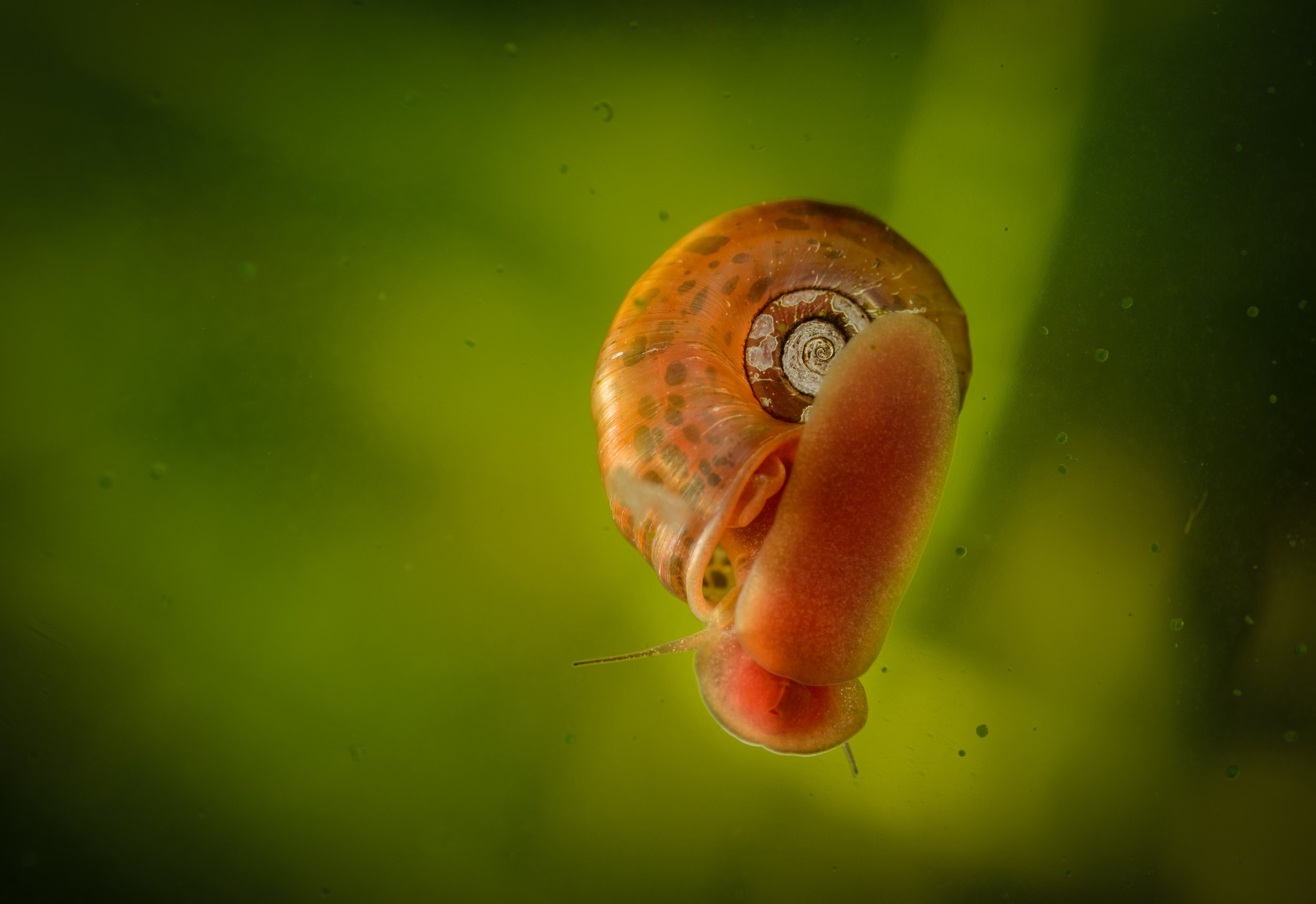 Image 1 of 2
Image 1 of 2

 Image 2 of 2
Image 2 of 2



Batman Nerite
Nerite Snails, belonging to the family Neritidae, are a popular choice among aquarists for their excellent algae-eating abilities, attractive shell patterns, and peaceful nature. These snails are found in both freshwater and brackish environments across Africa, Southeast Asia, and the Americas. They are highly valued not only for their utility in controlling algae growth but also for the variety of beautiful shell designs they offer, ranging from zebra stripes to polka dots and intricate swirls.
Physically, Nerite Snails are small and compact, with adult snails typically reaching around 1 inch (2.5 centimeters) in size, though some species may be slightly smaller or larger. Their shells come in a variety of stunning patterns, depending on the species, with popular varieties including the Zebra Nerite (Neritina natalensis), Tiger Nerite, and Olive Nerite. The Zebra and Tiger Nerites, for example, have shells with striking black and yellow or orange stripes, while Olive Nerites have smooth, olive-green shells. These patterns make Nerite Snails an attractive addition to aquariums, adding visual interest as they go about their algae-eating tasks.
In the aquarium, Nerite Snails are highly effective algae eaters and can help keep the tank clean by consuming various types of algae, including green spot algae, diatoms, and soft film algae. They are peaceful and non-aggressive, making them suitable for community tanks with a variety of tank mates, including fish, shrimp, and other snails. They are not known to eat live plants, making them ideal for planted aquariums. Because Nerite Snails cannot reproduce in freshwater, aquarists do not need to worry about an overpopulation of snails, as their eggs require brackish water to hatch.
Water parameters for Nerite Snails should reflect their natural environment. While they are adaptable to a wide range of conditions, they thrive in slightly alkaline water with a pH range of 7.0 to 8.5 and temperatures between 72 to 78°F (22 to 26°C). They prefer harder water to maintain their shells, which can become damaged or erode in soft, acidic water. If kept in low calcium environments, it is recommended to supplement their diet or water with calcium to support shell health.
Feeding Nerite Snails is easy, as they primarily feed on algae and biofilm. However, if there is not enough algae in the tank to sustain them, their diet can be supplemented with algae wafers, blanched vegetables like zucchini or spinach, and calcium-rich foods to promote healthy shell growth. It’s important to ensure they have enough to eat, especially in tanks where algae levels are low.
Breeding Nerite Snails in freshwater is not possible, as they require brackish water for their eggs to develop and hatch. In freshwater tanks, female Nerites may lay eggs on hard surfaces like rocks, driftwood, and even glass, but these eggs will not hatch. This makes Nerite Snails ideal for aquarists who want the benefits of snails without the worry of overpopulation.
Overall, Nerite Snails are an excellent addition to freshwater and brackish aquariums, providing both practical benefits in the form of algae control and aesthetic appeal with their beautifully patterned shells. Their peaceful nature, hardiness, and inability to reproduce in freshwater make them a favorite among aquarists of all experience levels. With proper care and attention to water parameters, these snails can thrive and contribute to a clean and visually stunning aquarium environment.
Nerite Snails, belonging to the family Neritidae, are a popular choice among aquarists for their excellent algae-eating abilities, attractive shell patterns, and peaceful nature. These snails are found in both freshwater and brackish environments across Africa, Southeast Asia, and the Americas. They are highly valued not only for their utility in controlling algae growth but also for the variety of beautiful shell designs they offer, ranging from zebra stripes to polka dots and intricate swirls.
Physically, Nerite Snails are small and compact, with adult snails typically reaching around 1 inch (2.5 centimeters) in size, though some species may be slightly smaller or larger. Their shells come in a variety of stunning patterns, depending on the species, with popular varieties including the Zebra Nerite (Neritina natalensis), Tiger Nerite, and Olive Nerite. The Zebra and Tiger Nerites, for example, have shells with striking black and yellow or orange stripes, while Olive Nerites have smooth, olive-green shells. These patterns make Nerite Snails an attractive addition to aquariums, adding visual interest as they go about their algae-eating tasks.
In the aquarium, Nerite Snails are highly effective algae eaters and can help keep the tank clean by consuming various types of algae, including green spot algae, diatoms, and soft film algae. They are peaceful and non-aggressive, making them suitable for community tanks with a variety of tank mates, including fish, shrimp, and other snails. They are not known to eat live plants, making them ideal for planted aquariums. Because Nerite Snails cannot reproduce in freshwater, aquarists do not need to worry about an overpopulation of snails, as their eggs require brackish water to hatch.
Water parameters for Nerite Snails should reflect their natural environment. While they are adaptable to a wide range of conditions, they thrive in slightly alkaline water with a pH range of 7.0 to 8.5 and temperatures between 72 to 78°F (22 to 26°C). They prefer harder water to maintain their shells, which can become damaged or erode in soft, acidic water. If kept in low calcium environments, it is recommended to supplement their diet or water with calcium to support shell health.
Feeding Nerite Snails is easy, as they primarily feed on algae and biofilm. However, if there is not enough algae in the tank to sustain them, their diet can be supplemented with algae wafers, blanched vegetables like zucchini or spinach, and calcium-rich foods to promote healthy shell growth. It’s important to ensure they have enough to eat, especially in tanks where algae levels are low.
Breeding Nerite Snails in freshwater is not possible, as they require brackish water for their eggs to develop and hatch. In freshwater tanks, female Nerites may lay eggs on hard surfaces like rocks, driftwood, and even glass, but these eggs will not hatch. This makes Nerite Snails ideal for aquarists who want the benefits of snails without the worry of overpopulation.
Overall, Nerite Snails are an excellent addition to freshwater and brackish aquariums, providing both practical benefits in the form of algae control and aesthetic appeal with their beautifully patterned shells. Their peaceful nature, hardiness, and inability to reproduce in freshwater make them a favorite among aquarists of all experience levels. With proper care and attention to water parameters, these snails can thrive and contribute to a clean and visually stunning aquarium environment.
Nerite Snails, belonging to the family Neritidae, are a popular choice among aquarists for their excellent algae-eating abilities, attractive shell patterns, and peaceful nature. These snails are found in both freshwater and brackish environments across Africa, Southeast Asia, and the Americas. They are highly valued not only for their utility in controlling algae growth but also for the variety of beautiful shell designs they offer, ranging from zebra stripes to polka dots and intricate swirls.
Physically, Nerite Snails are small and compact, with adult snails typically reaching around 1 inch (2.5 centimeters) in size, though some species may be slightly smaller or larger. Their shells come in a variety of stunning patterns, depending on the species, with popular varieties including the Zebra Nerite (Neritina natalensis), Tiger Nerite, and Olive Nerite. The Zebra and Tiger Nerites, for example, have shells with striking black and yellow or orange stripes, while Olive Nerites have smooth, olive-green shells. These patterns make Nerite Snails an attractive addition to aquariums, adding visual interest as they go about their algae-eating tasks.
In the aquarium, Nerite Snails are highly effective algae eaters and can help keep the tank clean by consuming various types of algae, including green spot algae, diatoms, and soft film algae. They are peaceful and non-aggressive, making them suitable for community tanks with a variety of tank mates, including fish, shrimp, and other snails. They are not known to eat live plants, making them ideal for planted aquariums. Because Nerite Snails cannot reproduce in freshwater, aquarists do not need to worry about an overpopulation of snails, as their eggs require brackish water to hatch.
Water parameters for Nerite Snails should reflect their natural environment. While they are adaptable to a wide range of conditions, they thrive in slightly alkaline water with a pH range of 7.0 to 8.5 and temperatures between 72 to 78°F (22 to 26°C). They prefer harder water to maintain their shells, which can become damaged or erode in soft, acidic water. If kept in low calcium environments, it is recommended to supplement their diet or water with calcium to support shell health.
Feeding Nerite Snails is easy, as they primarily feed on algae and biofilm. However, if there is not enough algae in the tank to sustain them, their diet can be supplemented with algae wafers, blanched vegetables like zucchini or spinach, and calcium-rich foods to promote healthy shell growth. It’s important to ensure they have enough to eat, especially in tanks where algae levels are low.
Breeding Nerite Snails in freshwater is not possible, as they require brackish water for their eggs to develop and hatch. In freshwater tanks, female Nerites may lay eggs on hard surfaces like rocks, driftwood, and even glass, but these eggs will not hatch. This makes Nerite Snails ideal for aquarists who want the benefits of snails without the worry of overpopulation.
Overall, Nerite Snails are an excellent addition to freshwater and brackish aquariums, providing both practical benefits in the form of algae control and aesthetic appeal with their beautifully patterned shells. Their peaceful nature, hardiness, and inability to reproduce in freshwater make them a favorite among aquarists of all experience levels. With proper care and attention to water parameters, these snails can thrive and contribute to a clean and visually stunning aquarium environment.





